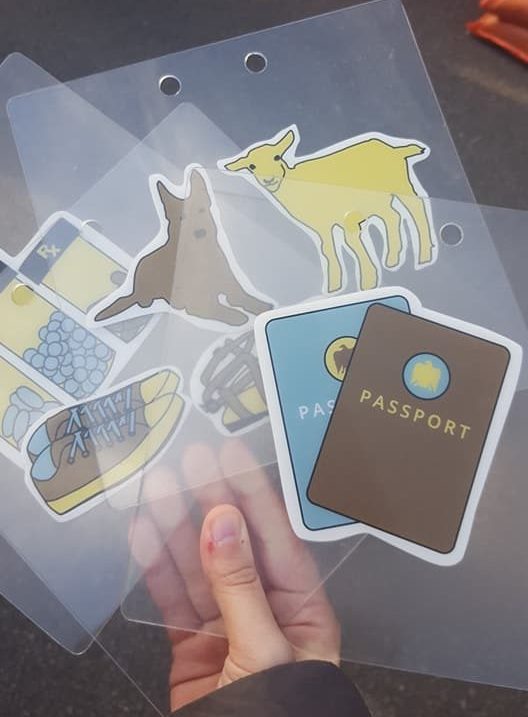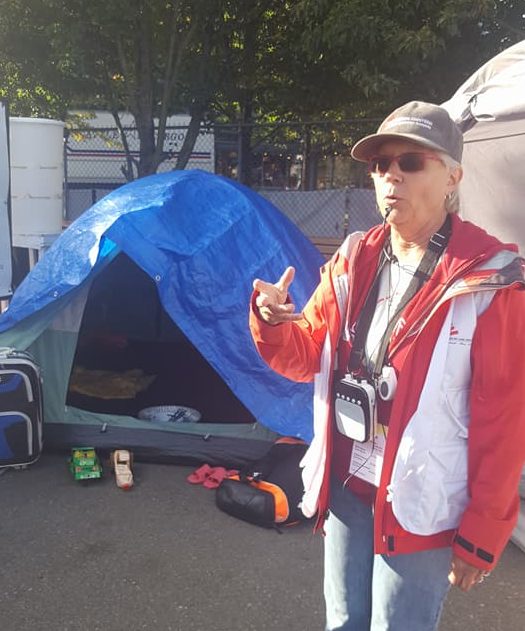Forced From Home Exhibit: A look into a refugee’s experience
The following was written by Kristen Johnson, PWA’s Communications and Fundraising Specialist:
I recently attended the Doctors Without Borders Forced From Home Exhibition in Seattle. The premise is relatively simple: we go through various stages and situations refugees and displaced people often face, and we are encouraged to think about what it would be like to be “forced from home”. It is eye-opening to see the dangers refugees face and the many steps and hardships they go through just to survive.
When we arrived, the exhibitors gave us an identity card with a country and a status. I was from the Syrian Arab Republic, and I was an Internally Displaced Person. As I went through the experience, I was to think about my journey through this identity and the choices I would make if this were my situation.
At one point, our guide instructed us to grab the supplies we would bring on our journey as refugees. We had thirty seconds to grab five cards that represented various items, including shoes, clothes, prescriptions, even a motorcycle and fishing gear! I thought thirty seconds would be plenty of time, but before I knew it, only a few seconds remained. In the confusion and rush, I was only able to grab four items: a passport, shoes, pets, and medications.

One supply short of everyone else, I continued the tour, learning of the many challenges refugees face, such as transportation and access to resources. The resources and camps depended heavily on your status of being a refugee and an IDP (internally displaced person), including your rights and protections. Once we found our way to the established camps run by organizations such as Doctors Without Borders and Peace Winds Japan, we faced other obstacles and conditions, such as small living spaces, water and food rations, and higher risk of contracting illnesses due to close quarters.

At each stage of our journey, we were asked to get rid of a supply card before we moved forward. By the end of the tour, my supply cards were gone. Others only had one item left. It was a heartbreaking idea that they wanted us to take away–carefully choosing a few items to grab and then likely having to sacrifice most of them to move on through our journey. It put into harsh perspective the realities people face when fleeing conflicts–no one flees because it is easy. The risks go far beyond the initial act of fleeing. During every step of the journey, the guide emphasized the factors against us, including people trying to take advantage of our fear and desperation by selling faulty gear and supplies, and even a boat to escape with, all for a hefty price. At the end of the journey, the refugee encampment was by no means a luxury or comfort. Food and water were still rationed and small camping tents were the standard for sleeping accommodations. At the end of our tour, the guide asked what our final destination would be, and most of us had no real answer to the question. Of course we would want to go back to our home country, but that was not an option for most of us. This is the reality many refugees face.
Peace Winds has been helping refugees since its founding in 1996 where it helped those escaping conflict in Iraq. Peace Winds has continued to provide support in Iraq through 2017. Today Peace Winds provides assistance to several refugee camps for those fleeing the violence in Syria and South Sudan. The people moving into refugee camps can expect to stay for years. Peace Winds is working with the Gawilan Refugee Camp to build permanent housing structures and wells for Syrian refugees. Peace Winds is also supporting refugees from South Sudan in Kenya at the Kakuma Refugee Camp by building shelters and overseeing activities at the camp.
DONATE HERE to help us support refugees in East Africa and the Middle East.
READ MORE about Peace Winds’ work around the world.